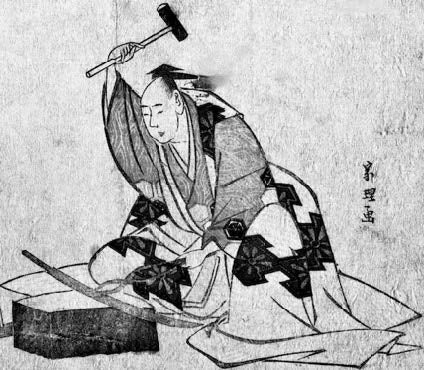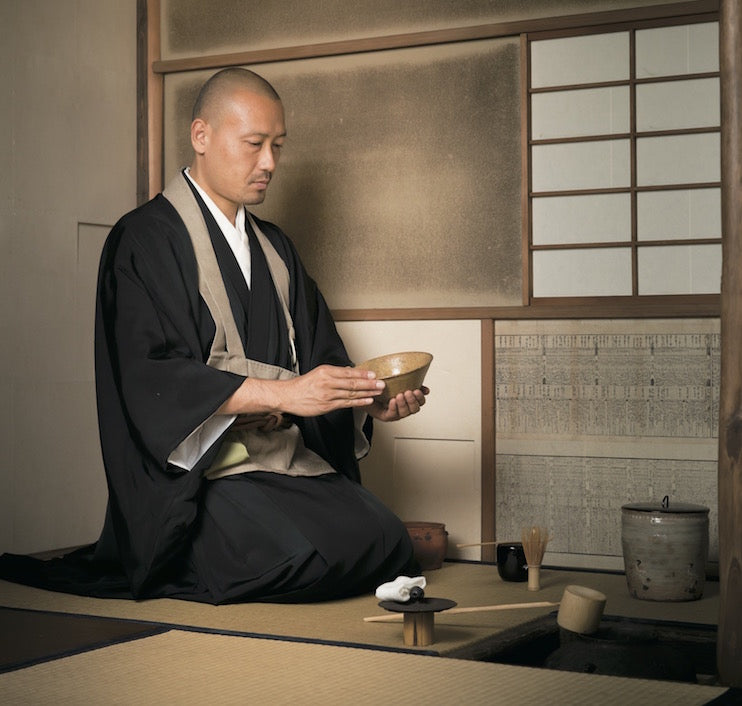Monks not only preside over the important events in a person's life but work to support the temple for which they are associated. Since the earliest times of Buddhism, the Buddhist monk has played a central role in both spiritual and social matters. The monks were exhorted to work for the well-being of all, and as a result, they are known to protect tradition, and interpret the future. A Buddhist's social life often revolves around the continued success and expansion of the goals of a temple and monastery. Although its history goes deep, Zen art and craft isn’t suspended in time. Even if its philosophies are about reaching beyond the human physical realm, the artists that created their inspirational work are strongly influenced by the materials that were formed by nature and later re-shaped by humans”. The image below shows a woodblock print of an 18th/c Monk and craftsman selling his objet d'art, and a rare Burl Root Incense Burner with a Daruma carving made by a Monk in service at Daruma-dera, Temple (Kyoto) in 1946.

A practice in appreciating simplicity, Zen arts and crafts grew up around the philosophy of Zen Buddhism, and monks played a crucial role. In Japan, where Zen has long been entwined in the cultural DNA of the nation, the arts and crafts became two important vehicles for spreading the message of Zen masters to the public at large. An amalgamation of spirituality, education, culture, and creativity, Zen art is at times difficult to classify articulately, but it is infinitely fascinating.
Although Zen prizes simplicity, the art of Zen isn’t always minimalistic in style and is reflected in the Japanese Tea Ceremony. At first Zen art, painting and calligraphy typically, represented religious figures, but as time passed, more secular imagery was explored: monks in prayer, religious implements such as the Hossu, (Whisk), foot ware, (Zori), prayer boards, (Ema), small home altars (Butsudan). Also, the Tori Gate, the lotus, and flowering plums were some of the regularly featured motifs. The tea ceremony became another manifestation of traditional Zen culture and art and was immortalized in the creation of functional and decorative objects to enhance the experience. Before it became popular in Japan, many Japanese monks would drink tea to stay awake during long sessions of meditation, and incense was used to “set the mood”. It was also a tool employed for the service being a practical, physical embodiment of the Zen philosophy.




